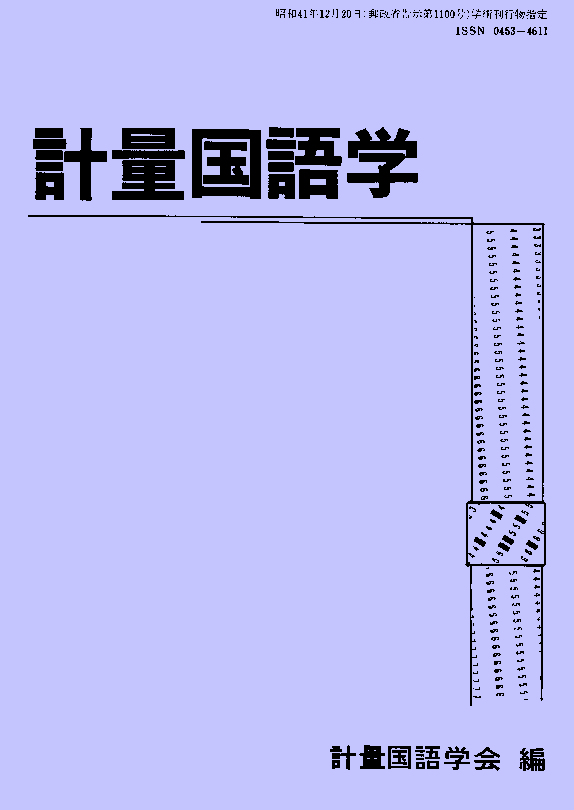All issues
Volume 28, Issue 1
Displaying 1-2 of 2 articles from this issue
- |<
- <
- 1
- >
- >|
Paper
-
Quantifying the Degree of Validity of Judgment Rules for FlexibilityTamotsu Shirado, Satoko Marumoto, Masaki Murata, Kyoko Kanzaki, Hitosh ...Article type: Paper
2011 Volume 28 Issue 1 Pages 1-20
Published: June 21, 2011
Released on J-STAGE: May 01, 2024
JOURNAL OPEN ACCESSWe developed a computational system to flexibly judge whether the misuse of honorifics are included in Japanese speech sentences. The proposed system is a practical approach to assist in education. The system uses judgment rules that were constructed in the present study by improving rules proposed in a previous study. Specifically, rules with a degree of validity beyond the thresholds determined by users were used for the judgment. The degrees of validity of rules were quantified by psychological experiments involving subjects who are not experts in Japanese linguistics.
Our research is useful because (i) the proposed system can urge users to learn normative rules which have higher validity (i.e., the importance of learning) prior to other rules, where excessively strict judgments are avoided by determining the thresholds appropriately; and (ii) rules with degrees of validity are useful quantitative data for researching and teaching honorific Japanese linguistics.View full abstractDownload PDF (450K)
Note
-
Tatsunobu Ohkubo, Hiromi OhkuboArticle type: Note
2011 Volume 28 Issue 1 Pages 21-26
Published: June 21, 2011
Released on J-STAGE: May 01, 2024
JOURNAL OPEN ACCESSQuantitative analyses on the comma as a punctuation mark in Japanese sentences have indicated data on the characters that commas follow have different features by writers’ individual trait and state components. In the present study, we classified 10 famous literary works written by Natsume Soseki (1867-1916), who is known to suffer from recurrent neurasthenia, using hierarchical cluster analysis and principal component analysis based on the characters that precede commas. From our findings of the classification of the literary works, we would suppose that the use of commas in the literary works was associated with the writer’s periodic exacerbations and remission of the neurasthenia.View full abstractDownload PDF (428K)
- |<
- <
- 1
- >
- >|
